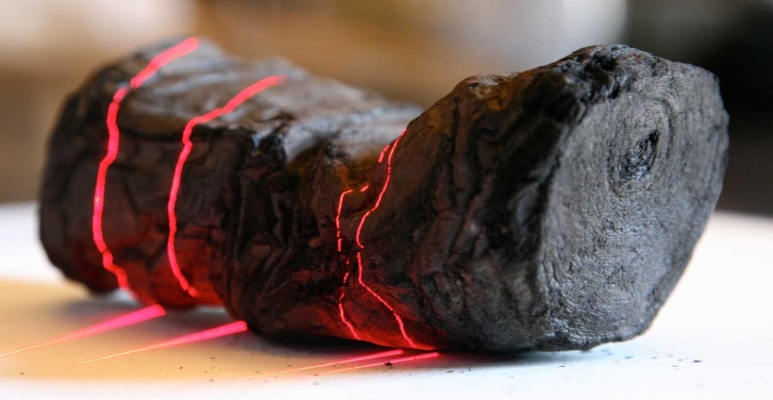Virtual Unwrapping of Ancient Texts Discussed During the First 50th Anniversary Lecture
Renowned scholar W. Brent Seales, University of Kentucky, was the first speaker in our 50th Anniversary Lecture Series. He explained and illustrated the promise of digitally unwrapping previously unreadable ancient scrolls in front of a packed auditorium in the California NanoSystems Institute.After being introduced by hosts Willeke Wendrich, director of the Cotsen Institute, and Glenn Wharton, chair of the UCLA/Getty conservation program, Seales gave an overview of the history of his research, using excerpts from “60 Minutes,” “The New Yorker,” “Smithsonian,” and “The New York Times.” With the aid of imaginative animations he then described the promise that his method holds to make it possible to digitally unroll the highly significant scrolls from Herculaneum, which were burned and buried as a result of the eruption of Mount Vesuvius in 70 CE.He demonstrated how these techniques have already been successfully applied to the En-Gedi Scroll, a third or fourth century CE carbonized scroll of parchment hiding an ancient text written with an iron-rich ink. This turned out to be part of the oldest known Hebrew copy of the book of Leviticus other than the Dead Sea Scrolls. The rapid developments in both imaging hardware and image processing software may well make it possible to do the same with the much more difficult task of visualizing the texts written in carbon-based ink on the now carbonized papyri from Herculaneum.With humor and humility, Seales explained the computer science involved in the process and the potential for future uses of these techniques. A private reception was held for Friends of the Cotsen Institute to meet the speaker prior to his presentation.


Leave a Reply
Want to join the discussion?Feel free to contribute!